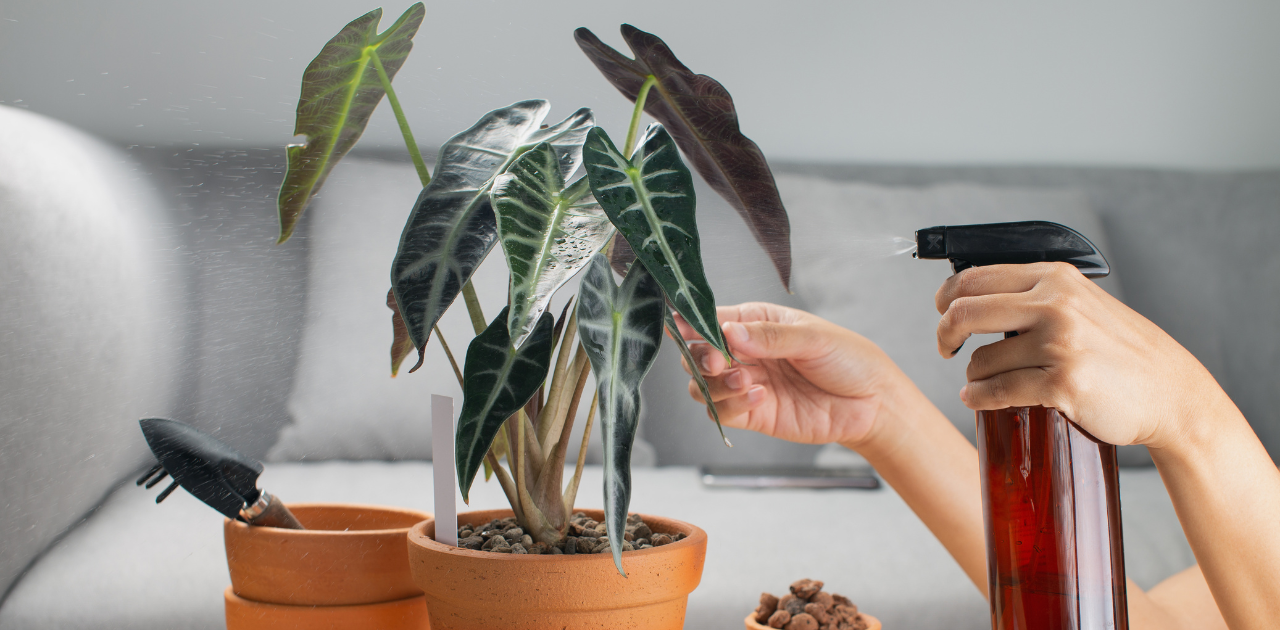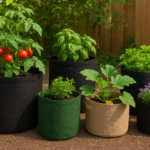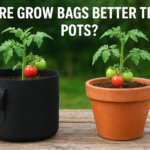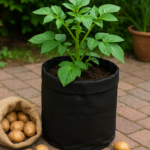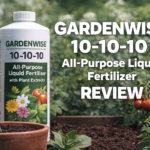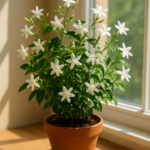Bringing outdoor plants indoors can transform your living space into a lush oasis, but it also brings the risk of introducing pests and diseases to your indoor garden. To ensure the health and vitality of your plants, it’s crucial to take proactive measures before bringing them indoors. One of the most effective ways to protect indoor plants is by spraying them with appropriate solutions.
In this article, we’ll explore the importance of spraying plants before bringing them indoors and provide valuable tips for maintaining healthy indoor plants year-round. Whether you’re a seasoned plant enthusiast or a beginner, these tips will help you create a thriving indoor garden that brings joy and beauty to your home.
So, let’s dive in and discover how to keep your indoor plants healthy and pest-free!
About Common Pests and Diseases
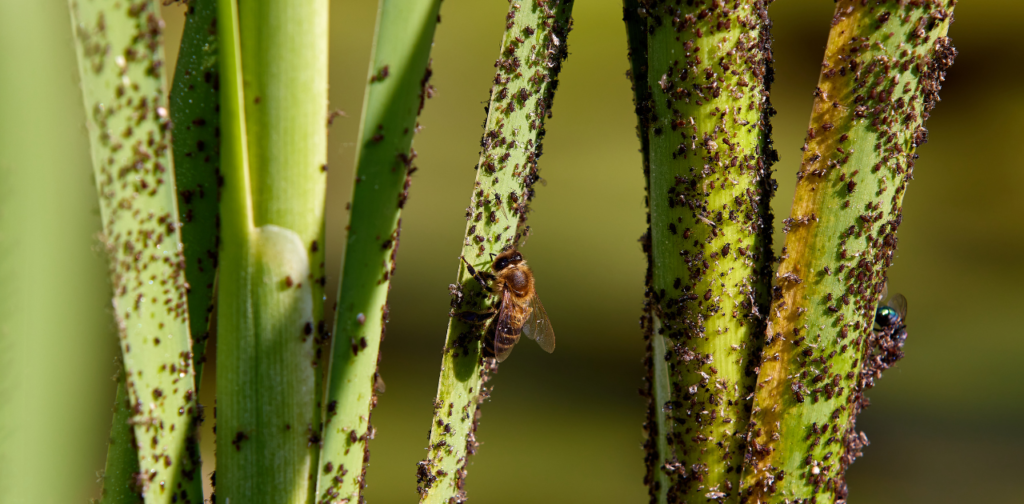
When it comes to indoor plants, there are several pests and diseases that gardeners need to be vigilant about. Identifying these common issues early on is essential for effective treatment and prevention. Here are some of the most prevalent pests and diseases that can affect indoor plants:
- Aphids: These small, soft-bodied insects feed on plant sap, causing leaves to become distorted and yellow. They reproduce quickly, making them a common nuisance for indoor gardeners.
- Spider Mites: These tiny pests are difficult to see with the naked eye but can cause significant damage to plants by sucking out their juices. They often leave behind fine webbing on leaves and stems.
- Whiteflies: These tiny, moth-like insects feed on the undersides of leaves, sucking out sap and causing leaves to turn yellow and drop prematurely. They can also transmit viral diseases to plants.
- Fungal Infections: Indoor plants are susceptible to various fungal infections, including powdery mildew, leaf spot, and root rot. These infections thrive in warm, humid environments and can spread rapidly if not treated promptly.
- Mealybugs: These small, cottony insects feed on plant sap and excrete honeydew, attracting ants and promoting the growth of sooty mold. They often hide in leaf axils and other protected areas of the plant.
- Scale insects resemble small bumps or scales on plant stems and leaves. They feed on plant sap and can cause yellowing, wilting, and premature leaf drop if left untreated.
How to Identify common pests and diseases that affect indoor plants?
Identifying common pests and diseases that affect indoor plants is essential for maintaining a healthy indoor garden. Here are some tips to help you recognize these issues:
- Visual Inspection: Regularly inspect your indoor plants for signs of pests or diseases. Look for unusual spots, discoloration, or distortion on the leaves, stems, and flowers.
- Presence of Insects: Look for insects crawling on the surface of your plants or flying around them. Common pests such as aphids, spider mites, and whiteflies are often visible to the naked eye.
- Webbing: Some pests, like spider mites, produce fine webbing on the undersides of leaves and along stems. If you notice any webbing, it’s a sign that your plants may be infested with these pests.
- Sticky Residue: Aphids and other sap-sucking insects excrete a sticky substance called honeydew, which can attract ants and promote the growth of sooty mold. Look for shiny, sticky residue on the leaves and stems of your plants.
- Yellowing or Wilting Leaves: Yellowing or wilting leaves can indicate various issues, including nutrient deficiencies, overwatering, or pest infestations. Inspect the affected leaves closely to determine the cause of the problem.
- Fungal Growth: Look for fuzzy or powdery growth on your plants’ leaves or stems. This could indicate a fungal infection, such as powdery mildew or leaf spot.
- Root Rot: If your plants show signs of wilting or yellowing despite adequate watering, check the roots for signs of rot. Healthy roots should be firm and white, while rotting roots may appear mushy and brown.
Read to know more: Back to the Roots Indoor Hydroponic Garden – A Review
Tips for preventing pests and diseases on indoor plants
Preventing pests and diseases on indoor plants is vital to maintaining a thriving and healthy indoor garden. Here are some tips to help you keep your plants pest-free and disease-resistant:
- Quarantine New Plants: Before introducing new plants to your indoor garden, quarantine them separately for a few weeks. This allows you to monitor them for signs of pests or diseases before introducing them to your existing plants.
- Inspect Regularly: Inspect your indoor plants regularly for signs of pests or diseases. Look for insects, webbing, sticky residue, yellowing leaves, or unusual spots on the foliage.
- Maintain Plant Hygiene: Keep your indoor plants clean by removing dead or decaying foliage, spent flowers, and any debris that may accumulate in the soil. This helps prevent the buildup of pests and diseases.
- Provide Proper Air Circulation: Good air circulation is essential for preventing fungal diseases and discouraging pests. Ensure that your indoor plants are not overcrowded and that there is adequate space between them for air to flow freely.
- Water Wisely: Avoid overwatering your indoor plants, as this can create conditions conducive to fungal growth and root rot. Water your plants only when the top inch of soil feels dry, and always use well-draining pots to prevent waterlogging.
- Use Clean Tools: When caring for your indoor plants, use clean tools and equipment to avoid introducing pests or pathogens. Sterilize pruning shears and other tools between uses to prevent the spread of disease.
- Natural Predators: Introduce natural predators, such as ladybugs or predatory mites, to help control pest populations in your indoor garden. These beneficial insects can help keep pest numbers in check without chemical pesticides.
- Rotate Plants: Rotate your indoor plants regularly to ensure even light exposure and prevent pests from becoming established in one area. This also helps promote balanced growth and prevents plants from leaning toward the light source.
Importance of spraying plants before bringing them indoors
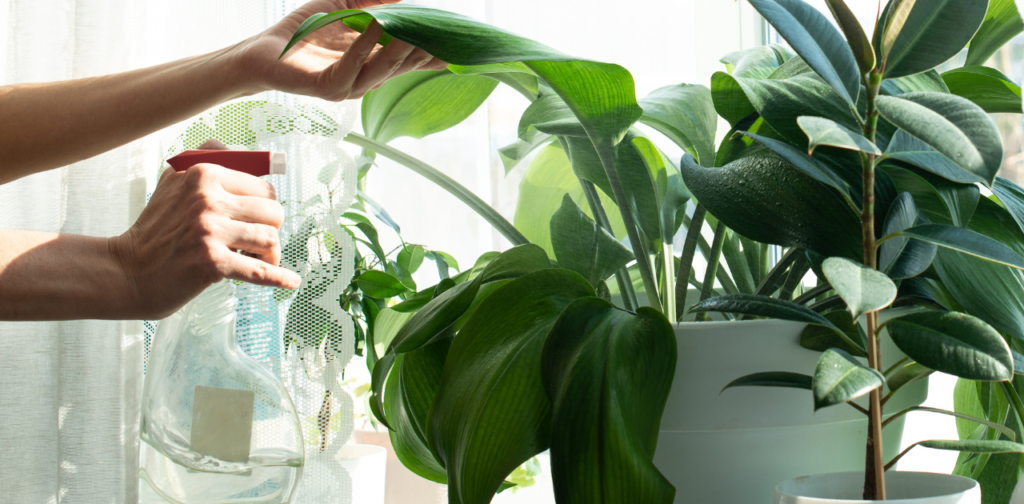
Bringing outdoor plants indoors can be a delightful way to enhance your living space with greenery and natural beauty. However, it also risks introducing unwanted pests and diseases into your home environment. Pests such as aphids, spider mites, and whiteflies can quickly infest indoor plants, leading to stunted growth, yellowing leaves, and even plant death if left unchecked. Similarly, fungal infections and other diseases can spread rapidly among indoor plants, causing widespread damage and requiring intensive treatment.
Spraying plants with appropriate solutions before bringing them indoors is a crucial step in preventing these issues. By applying natural or commercial sprays, you can eliminate existing pests and diseases on your plants and create a protective barrier against future infestations. This proactive approach not only safeguards the health and vitality of your indoor plants but also helps maintain a pest-free environment within your home. Ultimately, by spraying your plants before bringing them indoors, you can enjoy a thriving indoor garden that brings joy and tranquility to your living space.
What can I spray on my plants before I bring them inside?
Before bringing your plants indoors, it’s essential to take precautions to prevent the introduction of pests and diseases into your home environment. Here are some options for what you can spray on your plants before bringing them inside:
Natural Remedies
Natural remedies offer effective and eco-friendly solutions for controlling pests and diseases on indoor plants. Here are some commonly used natural ingredients and methods to help keep your plants healthy:
Neem Oil: Neem oil is derived from the seeds of the neem tree and is known for its insecticidal properties. It can effectively control various pests, including aphids, spider mites, and whiteflies. Mix neem oil with water and a few drops of dish soap to create a spray solution.
Garlic: Garlic contains compounds that repel pests and inhibit fungal growth. To make a garlic spray, crush a few cloves of garlic and steep them in water overnight. Strain the mixture and spray it on your plants to deter pests.
Peppermint Oil: Peppermint oil has a strong scent that repels many pests, including ants, aphids, and spiders. Dilute peppermint oil with water and spray it on your plants to keep pests at bay. Be sure to test it on a small area of your plant first to ensure it doesn’t cause any damage.
Soap Spray: A simple spray made with mild liquid soap and water can effectively control soft-bodied pests like aphids, whiteflies, and mealybugs. Mix a few drops of soap with water in a spray bottle and apply it to affected plants, covering both sides of the leaves.
Chili Pepper Spray: Chili peppers contain capsaicin, which repels many insects. To make a chili pepper spray, steep chopped chili peppers in water overnight, then strain the mixture and spray it on your plants. Be cautious when handling chili peppers, as they irritate the skin and eyes.
Essential Oils: Essential oils such as lavender, rosemary, and tea tree oil have natural insecticidal properties and can be used to repel pests from indoor plants. Dilute a few drops of essential oil in water and spray it on your plants as needed.
Homemade Sprays: DIY Recipes for Homemade Plant Sprays
Creating homemade plant sprays is a cost-effective and eco-friendly way to protect your indoor plants from pests and diseases. Here are some DIY recipes you can try:
- Soap Spray: Mix 1 tablespoon of mild liquid soap (such as castile) with 1 quart of water. Spray this solution on your plants to control soft-bodied pests like aphids and spider mites.
- Neem Oil Spray: Combine 1 teaspoon of neem oil with 1 quart of water and a few drops of dish soap. Shake well before use and spray on your plants to combat various pests, including aphids, whiteflies, and scale insects.
- Garlic Spray: Crush several garlic cloves and steep them in 1 quart of water overnight. Strain the mixture and add a few drops of dish soap. Spray this solution on your plants to deter pests.
- Peppermint Oil Spray: Mix 10-15 drops of peppermint essential oil with 1 quart of water and a small amount of liquid soap. Shake well and spray on your plants to repel pests like ants, aphids, and spiders.
- Chili Pepper Spray: Chop up a few chili peppers and steep them in 1 quart of water overnight. Strain the mixture and add a few drops of dish soap. Use this spicy spray to deter pests from your plants..
Commercial Options:
Plenty of commercial options are available if you prefer to avoid making your plant sprays. Here are some popular types of commercial plant sprays:
Insecticidal Soap: These ready-to-use sprays contain soap-based ingredients that control soft-bodied pests like aphids, spider mites, and whiteflies. They’re gentle on plants and easy to apply.
Neem Oil-based Sprays: Neem oil-based sprays are derived from the neem tree and offer natural pest control for indoor plants. They work against various pests and can also help prevent fungal diseases.
Pyrethrin-based Sprays: Pyrethrin-based sprays are derived from the chrysanthemum flower and are effective against a wide range of pests, including aphids, mealybugs, and caterpillars. When used as directed, they’re considered safe for use on indoor plants.
Systemic Insecticides: The plant absorbs these sprays, which provide long-lasting protection against pests. They’re handy for controlling difficult-to-reach pests like root aphids and scale insects.
Fungicidal Sprays: Fungicidal sprays are designed to control fungal diseases like powdery mildew, leaf spot, and rust. They contain active ingredients that inhibit fungal growth and protect plants from infection.
Application Methods

Applying plant sprays effectively ensures their efficacy and protects your indoor plants. Here are some best practices for applying plant sprays:
Choose the Right Time: Plan to apply plant sprays during the early morning or late afternoon when temperatures are more relaxed and the sun is less intense. Avoid spraying plants during the hottest day to prevent leaf burn.
Prepare the Solution: Mix the spray solution according to the product label or recipe instructions. Use clean containers and measuring tools to ensure accuracy.
Test on a Small Area: Before applying the spray to your entire plant, test it on a small, inconspicuous area first to check for any adverse reactions. This will help prevent damage to your plant.
Cover All Surfaces: Use a handheld sprayer or spray bottle to evenly coat all plant surfaces, including the tops and bottoms of leaves, stems, and flowers. Be thorough to ensure maximum coverage.
Avoid Dripping: Be careful not to over-saturate your plants with spray, which can lead to runoff and waste. Aim for a fine mist that evenly coats the plant without dripping excessively.
Repeat as Needed: Depending on the severity of the pest or disease problem, you may need to apply the spray multiple times at regular intervals. Follow the recommended application schedule for best results.
Monitor for Effectiveness: After applying the spray, monitor your plants closely for any signs of improvement or continued infestation. If necessary, reapply the spray to maintain control.
Safety Precautions: Wear gloves and protective eyewear when applying plant sprays to avoid contact with the solution. If using chemical sprays, work in a well-ventilated area and avoid inhaling the fumes.
Other Methods for Protecting Indoor Plants
Aside from using plant sprays, there are alternative methods for protecting indoor plants from pests and diseases. Here are some other strategies you can consider:
Natural Predators: Introducing beneficial insects like ladybugs, lacewings, or predatory mites into your indoor garden can help control pest populations naturally. These insects prey on common indoor plant pests like aphids, spider mites, and whiteflies, reducing the need for chemical interventions.
Physical Barriers: Physical barriers, such as row covers or mesh netting, can prevent pests from reaching your indoor plants. This method is particularly effective for preventing infestations of flying insects like whiteflies or thrips.
Companion Planting: Planting pest-repellent herbs like basil, mint, or lavender alongside indoor plants can help deter pests and reduce the likelihood of infestation. Additionally, some plants attract beneficial insects that prey on pests, further enhancing pest control.
Cultural Practices: Practicing good plant hygiene, such as regularly removing dead or decaying foliage, maintaining proper watering and ventilation, and avoiding overcrowding, can help create an environment less conducive to pest and disease development.
Organic Mulches: Applying organic mulches like compost or shredded bark to the surface of your plant pots can help suppress weeds and retain moisture in the soil, reducing stress on your plants and making them less susceptible to pests and diseases.
By incorporating these alternative solutions into your indoor plant care routine, you can help minimize the need for chemical interventions and create a healthier, more sustainable indoor garden environment.
Environmental Impact:
While plant sprays can effectively control pests and diseases on indoor plants, it’s essential to consider their potential environmental impact. Here are some key considerations:
Chemical Residues: Chemical pesticides and insecticides can leave residues on plants, soil, and surfaces, which may harm beneficial insects, wildlife, and the environment. Opt for natural or organic alternatives whenever possible to minimize chemical exposure.
Water Pollution: Excess use of chemical pesticides can leach into the soil and contaminate groundwater, rivers, and streams, leading to water pollution and harming aquatic ecosystems. Using eco-friendly and biodegradable plant sprays can help reduce the risk of water contamination.
Non-Target Effects: Chemical pesticides may have unintended consequences on non-target organisms, including beneficial insects, birds, and mammals. Choose products specifically targeting the pests affecting your plants while minimizing harm to other organisms.
Responsible Disposal: Properly dispose of empty pesticide containers and unused spray solutions according to local regulations to prevent environmental contamination. Avoid pouring leftover sprays down drains or onto the ground.
Integrated Pest Management (IPM): Adopting an integrated pest management approach, which combines various pest control methods in a targeted and environmentally responsible manner, can help minimize the environmental impact of plant sprays while effectively managing pest populations.
FAQs (Frequently Asked Questions)
Are homemade plant sprays safe for indoor plants?
Homemade plant sprays can be safe for indoor plants when used appropriately and in moderation. However, testing any new spray on a small area of your plant first is essential to ensure it doesn’t cause any adverse reactions.
How often should I apply plant sprays to my indoor plants?
The frequency of plant spray applications depends on the specific product or solution being used and the severity of the pest or disease problem. Follow the instructions on the product label or consult a gardening expert for guidance.
Are there any natural alternatives to chemical pesticides for controlling pests on indoor plants?
Yes, several natural alternatives to chemical pesticides exist, including neem oil, insecticidal soap, essential oil sprays, and beneficial insects. These options offer effective pest control while minimizing harm to the environment and beneficial organisms.
Can plant sprays harm pets or humans?
Some plant sprays, particularly those containing chemical pesticides, can harm pets and humans if ingested or inhaled. It’s essential to follow the safety precautions on the product label and avoid direct contact with spray solutions.
How can I prevent pests and diseases on my indoor plants without using plant sprays?
Several alternative methods for preventing pests and diseases on indoor plants include introducing natural predators, practicing good plant hygiene, using physical barriers, and companion planting. These methods can help reduce the need for chemical interventions.
Conclusion
In conclusion, protecting indoor plants from pests and diseases requires a proactive and holistic approach. Using a combination of homemade sprays, natural remedies, and alternative methods, indoor gardeners can effectively safeguard their plants while minimizing the environmental impact of pest control. Prioritizing plant health, environmental sustainability, and safety is essential when choosing pest control methods. With proper care and attention, indoor plants can thrive in their new environment, bringing beauty and joy to any indoor space.

